In 2022, the U.S. Department of Energy’s (DOE) Sustainability Performance Division recognized 3 individuals and 6 teams from DOE sites and national laboratories. Congratulations to everyone involved in making these projects successful!
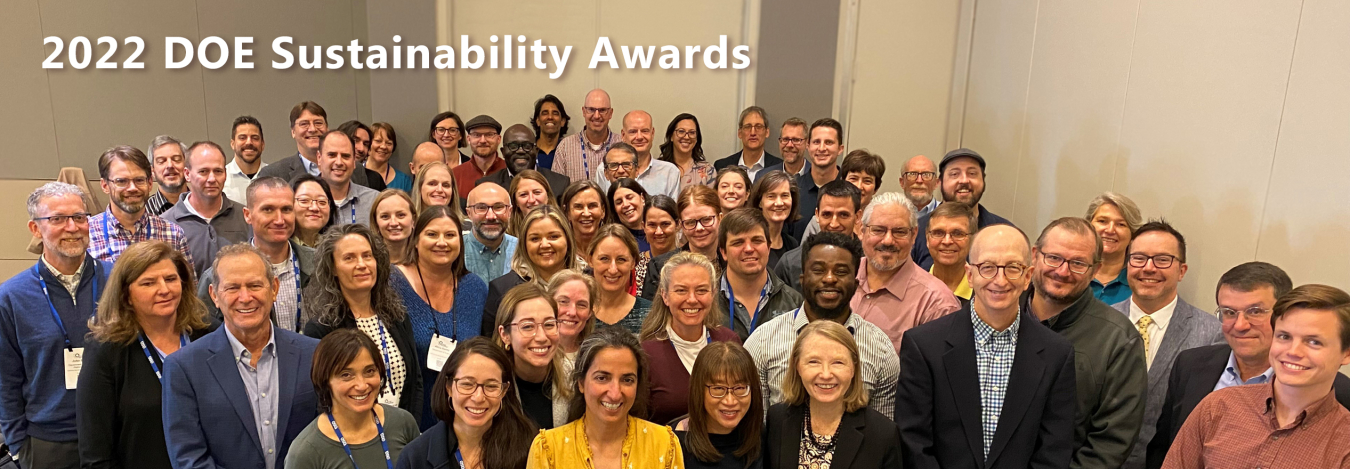
Learn more about the 2022 DOE Sustainability Award winners below.
Lifetime Achievement awards recognize long-time DOE Sustainability Champions who have dedicated significant amounts of time to making DOE sustainable.
 Steve Greenberg
Steve GreenbergSteve Greenberg, Lawrence Berkeley National Laboratory
Steve Greenberg has been an invaluable contributor to a wide range of sustainability efforts over his more than 30 years at Lawrence Berkeley National Laboratory (LBNL). Steve has been involved in designing, constructing, commissioning, and ensuring continual improvement of the National Energy Research Scientific Computing Center, which is LBNL’s award-winning supercomputer. Steve also led the design and oversaw testing of LBNL’s FLEXLAB's high-accuracy power metering, which supports all research including work on grid services such as voltage and frequency regulation. Steve has also been a key contributor in establishing LBNL’s electric vehicle charging program and has played a key role in advising on the use of standby generators in response to California’s Public Safety Power Shutdowns.
Steve has helped teach generations of sustainability practitioners, and has contributed significantly to efficiency, sustainability advancements, and behavioral changes at LBNL. His passion and commitment to sustainability, both at the lab an in his personal life have inspired many others to follow in his footsteps
Sustainability Champions are individuals who make an effort to advance sustainability goals relating to sustainable buildings, water, waste, sustainable acquisition, etc.
Christopher IschayChristopher Ischay, Idaho National Laboratory
Christopher Ischay has led INL’s sustainability program since its inception and has helped make sustainability a top priority at INL. Throughout his time at INL, he has ensured sustainability program priorities were integrated into projects and long-term planning documents such as INL’s Annual Laboratory Plan. Chris was a key contributor in establishing the INL’s EV charging program before it was a DOE priority. Chris also helped achieve Guiding Principles compliance for 25 DOE-owned buildings, which has resulted in approximately 35% reduction in greenhouse gas emissions since 2008. Through Chris’ work, INL is on track to meet the ambitious goal of net-zero carbon emissions by 2031. Chris’ efforts have culminated in outstanding sustainability goal performance at INL and throughout DOE.
 Glenn Cross
Glenn CrossGlenn Cross, Oak Ridge National Laboratory
Since 1992, Glenn Cross has served as the chief architect and engineer for Oak Ridge National Laboratory’s (ORNL) Energy and Sustainability Systems. In this role, Glenn was the primary resource in setting up ORNL’s Centralized Energy Data System (CEDS), ORNL’s system to track energy management efforts. Glenn continues to manage the ever-growing system, improves reporting interfaces, and oversees data streaming to researchers and operations personnel alike. Glenn also analyzes, reviews, develops, and maintains the meter network and automation and control systems used by ORNL. Glenn’s work on metering and CEDS were crucial in achieving DOE’s 50001 Ready certification for 65 buildings at ORNL. Additionally, in FY 2021 alone, Glenn managed the addition of 27 new advanced utility meters and integrated 51 new data streams from other systems across the lab. Glenn’s capability, drive, and hard work at ORNL has resulted in significant sustainability, cost savings, and efficiencies across ORNL and DOE.
Outstanding Sustainability Programs or Projects are sustainable programs or projects that reduce costs and increase efficiency.
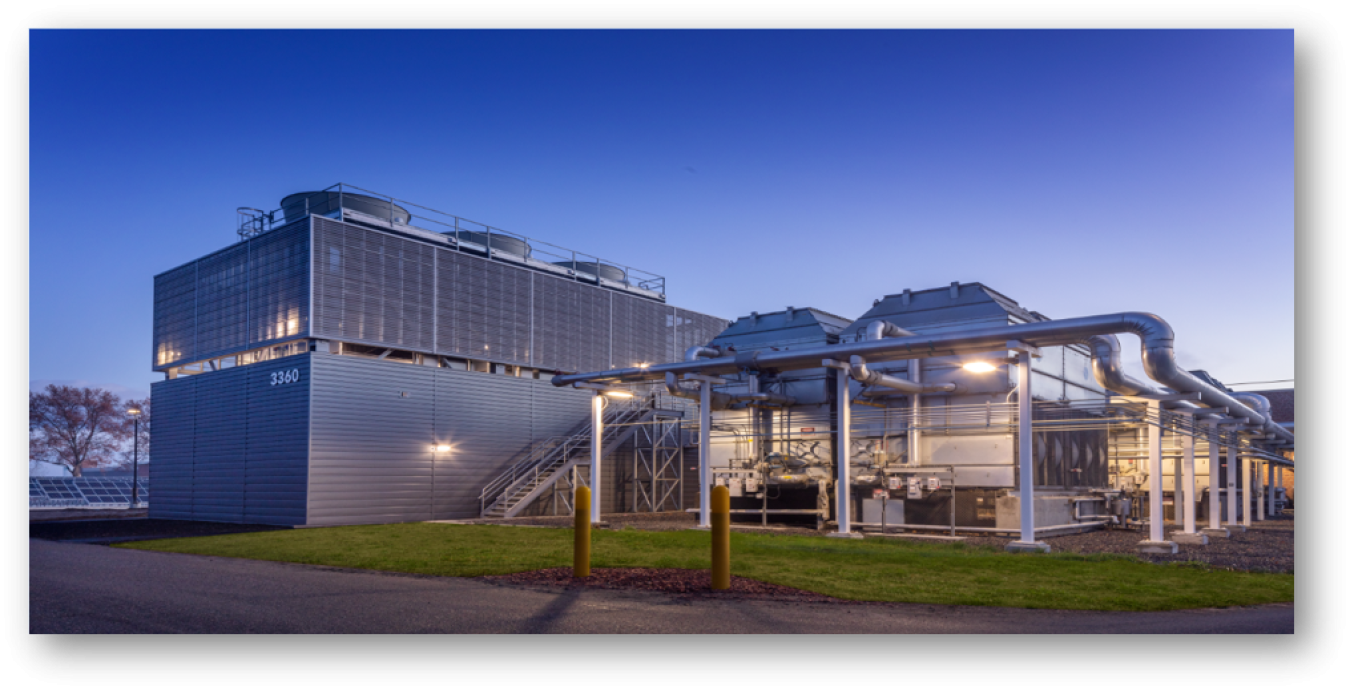 PNNL Heat Transfer Building
PNNL Heat Transfer BuildingPacific Northwest National Laboratory’s Don’t Waste the Heat! ESC/HTB Combine to Create a Net-Zero Ready Framework
Pacific Northwest National Laboratory (PNNL) recently completed its Energy Sciences Center (ESC), a 140,000-square-foot, $90 Million, high-performance sustainable, net-zero-emissions-ready facility that meets the Guiding Principles for Sustainable Federal Buildings. The facility uses waste-heat energy generated by high-performance computers housed in an adjacent building, the Heat Transfer Building (HTB). The Heat Transfer Building provides a highly efficient means of rejecting the heat generated while cooling the Environmental Molecular Sciences Laboratory supercomputer and research equipment. This is done by moving the heat captured at the supercomputer to the ESC in large underground pipes, which is then used to pre-cool the single pass ventilation air during the cooling season, or to temper the ESC single pass ventilation air during the heating season.
The HTB also provides a centralized condenser water system and allows for the reduction of facility specific heating equipment dependent on alternative sources of fuel. The HTB/ESC project is designed to reduce PNNL’s carbon footprint by approximately two million pounds of carbon per year and is key in helping PNNL advance its net-zero goals.
ANL's 440 facility teamArgonne National Laboratory Smart Labs Program – Honorable Mention
Argonne National Laboratory’s (ANL) Smart Labs Program is one of its key sustainability initiatives, which utilizes science-based approaches to improve safety, reduce energy consumption, and address equipment deficiencies in laboratories. Argonne’s Smart Labs Program has been fully implemented in three buildings totaling 650,000 square feet. Through the Smart Labs Program, ANL has reduced energy consumption, harmful carbon emissions, and improved resilience by reducing demands and increasing available capacity on critical utility infrastructure. Furthermore, Smart Labs evaluations identify and repair improperly functioning systems and laboratory ventilation issues, which extend equipment life and improve occupant comfort and safety. This program has reduced electricity use by 3.4 million kWh/year, natural gas use by 55,800 therms/year and has resulted in $207,000/year in utility cost savings.
Strategic Partnerships for Sustainability are partnerships between sites or with other organizations that contribute positively to site sustainability.
 Y-12 National Security Complex, Representatives of the Strategic Partnership Team
Y-12 National Security Complex, Representatives of the Strategic Partnership TeamY-12’s Multifaceted Partnerships Efficiently Maximizes Resilient Sustainability
In FY 2021, Y-12 National Security Complex (Y-12) managed three strategic partnerships improving site efficiency and sustainability. Y-12 partnered with Johnson Controls Inc. and Savannah River Site (SRS) to transfer approximately 24,500 lbs. of R123 refrigerant by from Y-12’s to SRS.
Secondly, Y-12 produced a unique part for the U.S. Army’s White Sands Missile Range. Through the manufacturing of this part, Y-12 improved material substitution and technology efforts and reduced downstream waste by reducing the generation of turnings and scrap.
Y-12 also partnered with its on-site waste management subcontractor, to implement wastewater treatment process improvements that reduced chemical use by 25 to 45 liters per year and eliminated the need to collect more than 400,000 gallons of treated wastewater in a tank for batch treatment prior to discharge. In addition to cost savings, these partnerships improved efficiency, increased resilience, and reduced the use of toxic chemicals.
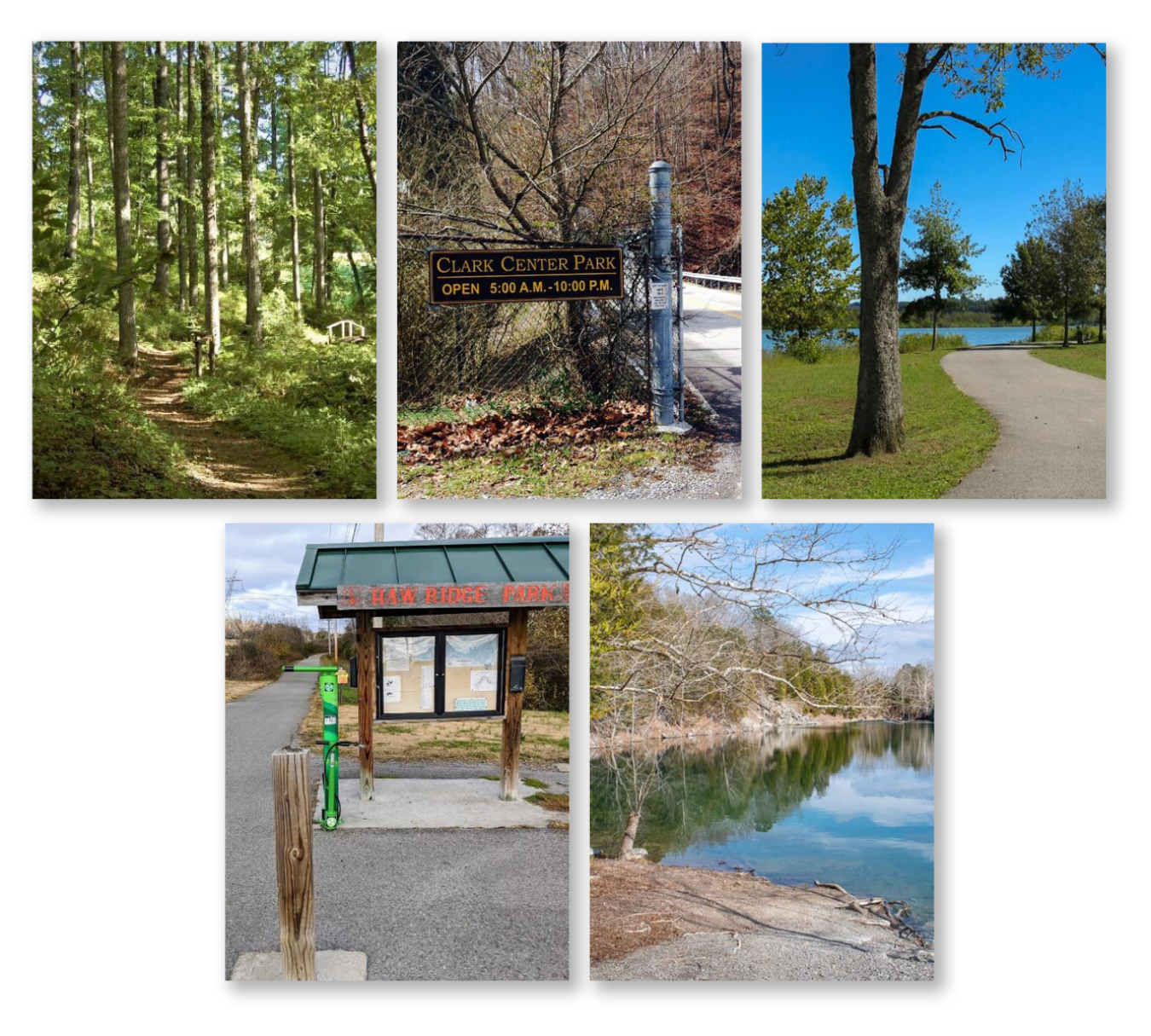 Clockwise from top left: University of Tennessee Arboretum, Clark Center Park, Melton Lake Greenway, Haw Ridge Park, North Boundary Trail
Clockwise from top left: University of Tennessee Arboretum, Clark Center Park, Melton Lake Greenway, Haw Ridge Park, North Boundary TrailEast Tennessee Technology Park’s Natural Partnerships – A Sustainable Legacy for the Oak Ridge Reservation – Honorable Mention
For decades, East Tennessee Technology Park (ETTP) has enhanced of the quality of life in Oak Ridge through partnerships aimed at education, recreation, conservation, and life-skills development. Through partnerships with Oak Ridge Office, Oak Ridge Environmental Management, UCOR, and Office of Science, ETTP has transferred nearly 1300 acres of land saving millions in public tax dollars. The results of these partnerships include environmental preservation, development of educational and historic venues, and public parks, trails, greenways. In addition, new jobs and businesses were introduced to the area as well as some local carbon free pollution energy sources.
Transfer of two water treatment plants at Y-12 and ETTP to the City of Oak Ridge has enabled efficiency upgrades that save water, reduce chemical use, and lower overall operating costs. ETTP’s partnerships demonstrate an enduring commitment to a resilient and sustainable future for decades.
Innovative Approach to Sustainability awards are inventive ideas or methods and technologies that improve site sustainability and can be applied across DOE.
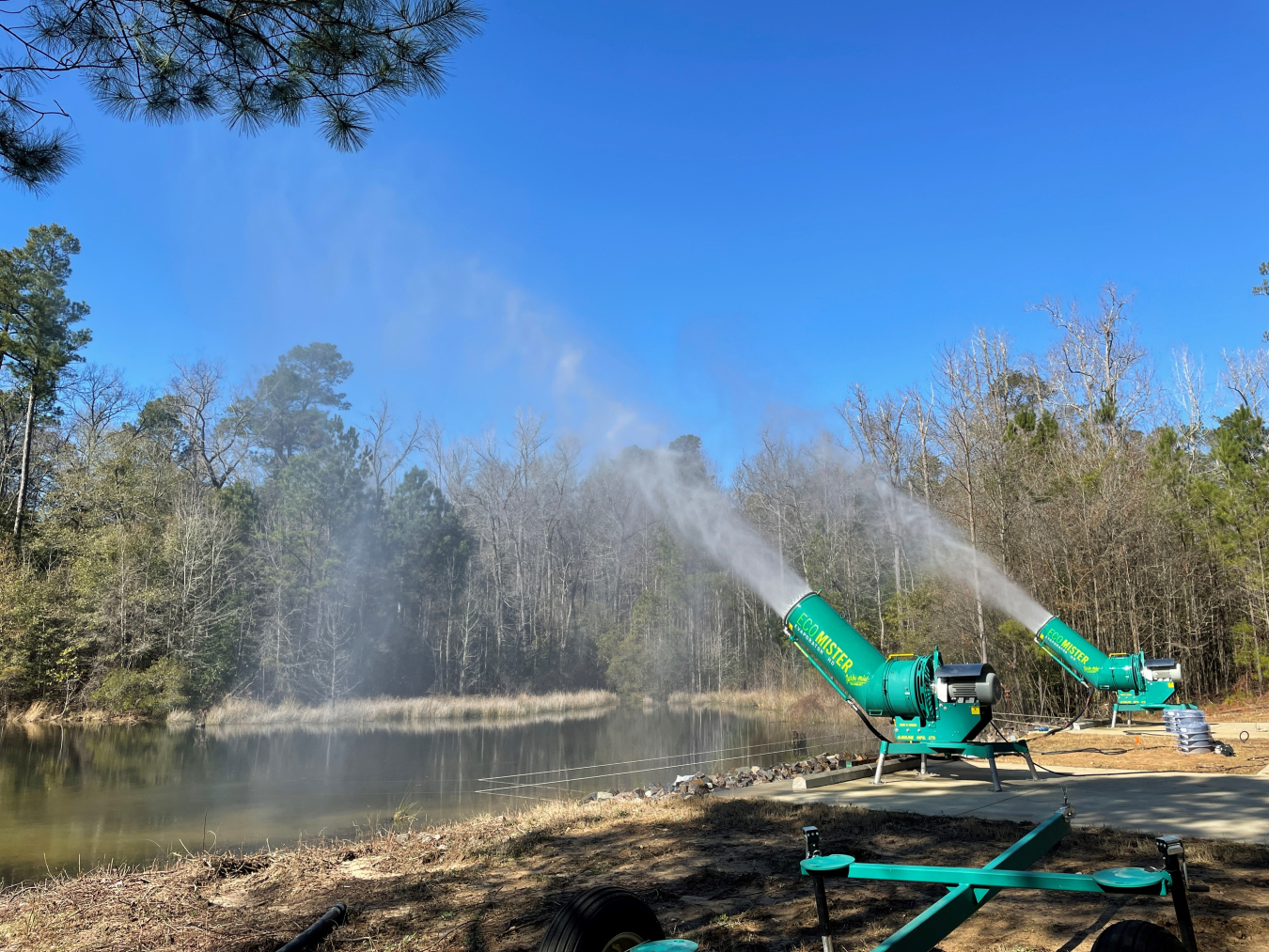 SRS Evaporators
SRS EvaporatorsPhytoremediation Project at the Savannah River Site
Savanah River Site developed a sustainable and practical solution to address tritium discharge, evapotranspiration. The abundance of nearby trees led to the idea of using the forest’s photosynthesis as part of a water management approach. An integrated project team, comprised of DOE, Savannah River Nuclear Solutions, US Forest Service, Savannah River Ecology Laboratory, and Savannah River National Laboratory, designed and implemented the Phytoremediation Project which uses a dam to intercept groundwater and force it into a 3-acre pond, which serves as a holding basin. From there, an inexpensive irrigation system safely moves the water onto a 60-acre native pine forest where it evapotranspires through trees to the atmosphere.
The Project provides 192 tons annually of carbon sequestration, which is approximately six times better than a NetZero carbon footprint. To date, approximately 190 million gallons of water containing nearly 7,000 curies of tritium have been safely irrigated throughout thousands of pine trees rather than discharged to the Savannah River.
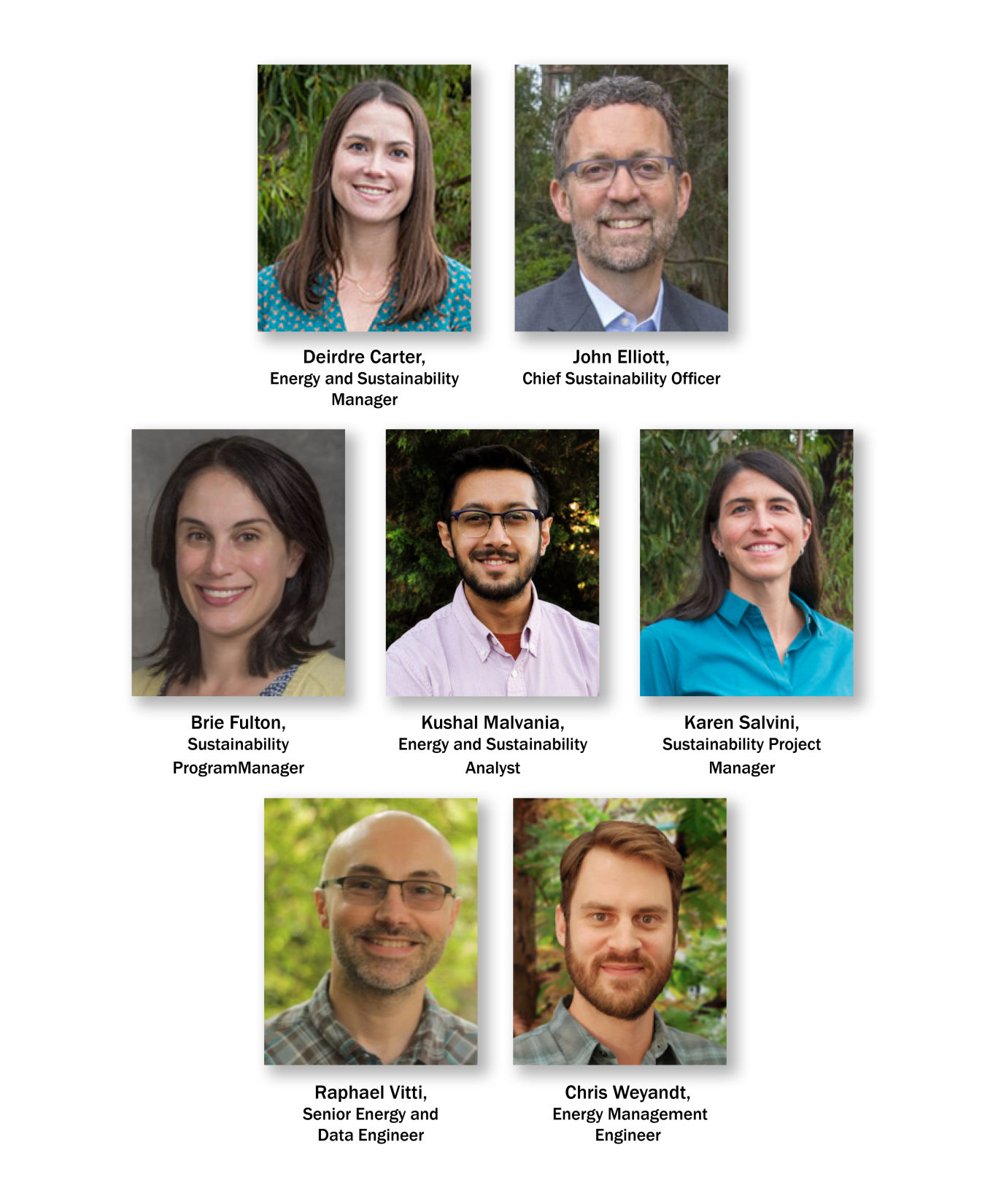 LBNL’s Project Team: Deirdre Carter, John Elliot, Brie Fulton, Kushal Malvania, Karen Salvini, Raphael Vitti, Chris Weyandt
LBNL’s Project Team: Deirdre Carter, John Elliot, Brie Fulton, Kushal Malvania, Karen Salvini, Raphael Vitti, Chris WeyandtLawrence Berkeley National Laboratory’s Sustainability Data Integration, Organization, Processing, Analytics, and Visualization Project – Honorable Mention
Lawrence Berkeley National Laboratory’s (LBNL) sustainability team successfully completed an innovative, multi-year effort to make sustainability data actionable by building a powerful data ecosystem. The data ecosystem includes efforts to integrate, organize, process, analyze, and visualize data across the lab. A few of LBNL’s efforts include a nine-year effort to integrate more than 19,000 interval data points from two building automation systems and hundreds of utility meters; a three-year effort to automate processes to perform calculations across hundreds of electricity and natural gas meters to accurately express building utility consumption; and a five-year effort to develop a robust data analytics platform using an off-the-shelf product called SkySpark. As a result of LBNL’s data environment efforts, LBNL has reduced the time spent on manipulating and analyzing data, improved the accuracy of federal sustainability reporting, and has improved its overall sustainability posture through greenhouse gas emissions, energy, water, and waste savings.

